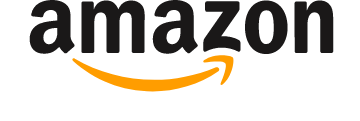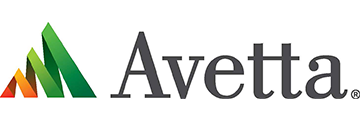
Education comes with built-in milestones. College degrees, certifications and certificates all signify certain levels of achievement and express some of the value safety professionals can provide to employers. Even advancing into the next academic year can be a cause for celebration.
But these milestones are not finish lines. Your professional development is a lifelong process requiring dedication, hard work and perseverance. Like a marathon, that process can present an appealing challenge with plenty of internal and external rewards.
“Unfortunately, to train for a marathon is to expose oneself to a high risk of injury,” say Beth A. Taylor, Ph.D., and Paul D. Thompson, M.D., in “How to Train for a Marathon,” an article by published in the American Heart Association’s Cardiology journal. The authors cite a 2007 study published in Sports Med that shows the annual incidence rate for running injuries may be as high as 90 percent in individuals training for a marathon.
These injuries are often due to overuse, which is why Taylor and Thompson make the case for applying pre-race physical and psychological preparation techniques focused on injury prevention. What would “injury” mean in the context of learning? Think of a student who has pushed themselves too hard and starts experiencing crippling physical symptoms of burnout right before a test.
If you are committed to continuing your occupational safety and health (OSH) education without overextending yourself, here are five runner-inspired steps you can take.
1. Make a Plan
Before lacing up your running shoes and hitting the road, take some time to consider what you want to get out of your next learning experience. Are you interested in mastering a new skill? Do you want to better understand a subject you’ve already covered? Is it a good time to focus on networking and building professional relationships?
Be realistic about the time and money you have to spend, keeping in mind that your employer may be able to help with both. Set a long-term timeline for continuing education that makes room for rest. Last but not least, don’t be afraid to acknowledge your ambitions related to increasing your earning potential or advancing your career.
In the safety profession, investing in education can pay significant dividends. For instance, according to a recent salary survey we conducted in partnership with the Board of Certified Safety Professionals (BCSP), safety practitioners with at least one industry certification earn $20,000 more per year than those with none. Those with a master’s degree typically earned $11,000 more each year than those with a bachelor’s degree, and $15,000 more than those with an associate degree.
2. Start Slowly
When runners neglect to warm up, they put themselves at greater risk for injury. The experts at the University of California San Francisco’s RunSafe Clinic recommend a warm-up that lasts up to an hour, incorporating gentle exercises such as light jogging or static stretching. By preparing your heart, lungs, muscles and brain for marathon training, you put yourself in a better position to perform at your best.
Similarly, before enrolling in a new professional development course or certificate program, it’s smart to give yourself more time than you think you’ll need for preparation. This is especially true if it’s been a while since you were part of a classroom. Rather than enrolling in a master’s degree program immediately, for example, you might want to consider signing up for a few individual classes to get a feel for how learning fits into your life. Rather than waiting for your first homework assignment, spend time before class focusing your brain with relevant reading material.
3. Choose When to Push Yourself
Serious marathon runners know that the best race day preparation involves alternating between easier and harder days of training. On hard days, athletes might run faster, longer or even tackle more difficult terrain to push themselves beyond their current capabilities and grow stronger. But pushing forward with this challenging regimen for two days in a row can undermine training efforts and cause injuries.Serious marathon runners know that the best race day preparation involves alternating between easier and harder days of training. On hard days, athletes might run faster, longer or even tackle more difficult terrain to push themselves beyond their current capabilities and grow stronger. But pushing forward with this challenging regimen for two days in a row can undermine training efforts and cause injuries.
The importance of taking breaks and selectively pushing oneself during the learning process is also well-proven. In a study on the effects of cognitive fatigue during school testing, published in the March 2016 Proceedings of the National Academy of Science in the United States of America, researchers found that students who took a 20- to 30-minute break improved their test performance by 1.7 percent of a standard deviation on average.
There is also longer-term research showing the benefits of taking extended breaks of weeks, months or years between types of learning. A study published in the July 2015 issue of the Journal of Education and Training Studies examined the influence of a “gap year,” or taking a yearlong break, on medical students. It found that 97 percent of those surveyed who had taken a gap year would advise current students to take one, saying it made them more mature during their schooling.
4. Take Care of Your Body
Staying hydrated is perhaps the most important aspect of running a marathon. Along with getting six to eight hours of sleep and eating foods rich in nutrients, it’s one of the best ways to ensure that a runner’s body can go the distance. Dehydration is responsible for plenty of adverse health outcomes during races, particularly in warmer environments, and can also hinder an athlete’s speed, stamina and agility. According to a November 2011 study published in the Journal of Athletic Training, 70 percent of runners have experienced performance decrements that they attributed to dehydration.
Whether you’re attending a professional development conference, day-long safety training or college course, it’s easy to forget to drink the water you need to be your best. Unlike eating meals and getting a good night’s rest, time for drinking eight glasses of water probably isn’t already built into your day. Carrying a water bottle and using it is a simple change that can make a huge impact on your ability to learn.
5. Rest, Recover, Reflect
The time following a marathon is just as important to runners as the training period before a race. In addition to pausing and feeling good about the accomplishment, many athletes take immediate steps to address their physical needs. For example, Keck Medicine at the University of Southern California recommends icing sore muscles and refueling with protein and carbohydrates. The one thing smart runners don’t do, however, is sit on the couch.
If you’ve just reached an important educational milestone, take the time to think about your experience and pat yourself on the back. Maybe even indulge in a glass of chocolate milk, a post-marathon favorite for many tired runners. But once you’ve taken a breath and checked in with your mind and body, don’t let your progress come to a halt. As a safety professional, you already know how to stay mindful in the present while planning for the future. If you put those skills to use in service of your education, you’ll go much further than 26 miles.
Every safety professional has a unique career journey. That’s why we offer more than 100 courses along beginner, intermediate and advanced learning paths at SafetyFOCUS. Learn which path is right for you.



